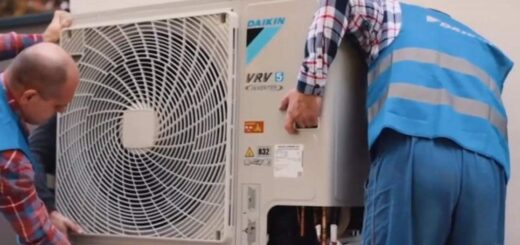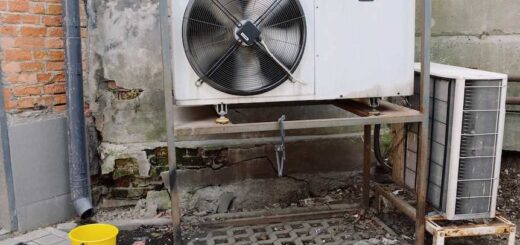Mitsubishi Mini Split not heating? Here’s How to Fix It

Are you feeling the chill despite owning a Mitsubishi Mini Split system? Don’t worry, we’ve got you covered.
In this comprehensive guide, we will address the common reasons behind your unit not providing adequate warmth and offer step-by-step instructions on troubleshooting and resolving these issues.
From ice build-up to incorrect temperature mode selection, dirty coils, or tripped circuit breakers, we will equip you with the knowledge and techniques to ensure optimal performance and the desired warmth during colder months.
Stay cozy with our expert tips and solutions.
Reasons for Mitsubishi Mini Split Not Heating
There are several common reasons for a Mitsubishi Mini Split not heating. One possible issue could be ice build-up on the fan motor and coils, which can hinder the heating process.
Another common mistake is selecting the wrong temperature mode, such as choosing the COOL mode instead of the HEAT mode.
Dirty or dusty coils and filters can also impede the heating function.
Additionally, a tripped circuit breaker, insufficient time for the HEAT mode to take effect, or a delay in HEAT mode activation can prevent the unit from heating properly.
Clogged air vents and frosty coils are also potential culprits.
Lack of maintenance outdoors, such as clearing ice build-up on the coils, can further contribute to heating issues.
Ice Build-Up on Fan Motor and Coils
Ice build-up on the fan motor and coils can significantly affect the heating function of a Mitsubishi Mini Split. When ice forms on these components, it restricts airflow and prevents the unit from properly heating the room. To address this issue, the following cleaning and troubleshooting techniques can be employed:
- Clean the coils and fan motor: Remove any ice buildup by gently defrosting the unit. Once the ice has melted, clean the coils and fan motor using a soft brush or cloth to remove any dirt or debris.
- Check for air leaks: Inspect the unit for any gaps or cracks that may be allowing cold air to enter and cause ice buildup. Seal any leaks using weatherstripping or caulk.
- Improve ventilation: Ensure that the unit is not obstructed by furniture or other objects that may impede proper airflow. Clear any blockages and ensure that air vents are clean and unobstructed.
- Schedule regular maintenance: Regularly clean and inspect the Mini Split to prevent ice buildup. This includes cleaning or replacing the air filter, as a dirty filter can contribute to ice formation.
Wrong Temperature Mode Selected
When the wrong temperature mode is selected on a Mitsubishi Mini Split, it can result in inadequate heating performance and leave you feeling cold despite having the unit turned on.
To troubleshoot this issue, follow these steps to ensure the correct temperature mode is selected.
First, check the remote control and make sure it is set to the HEAT mode. If it is set to COOL or any other mode, switch it to HEAT.
If this does not resolve the problem, try resetting the Mitsubishi Mini Split. Locate the reset button at the bottom of the unit and press it.
Additionally, you can turn the circuit breaker on and off to reset the unit.
Dirty or Dusty Coils or Filter
To address the issue of inadequate heating performance in a Mitsubishi Mini Split, it is crucial to examine the possibility of dirty or dusty coils or filter. Here are some troubleshooting tips for addressing this problem:
- Inspect the filter: Check if the air filter is dirty or clogged with dust. If so, clean or replace it according to the manufacturer’s instructions.
- Clean the coils: Dirty coils can hinder the proper heating performance of the mini split. Gently brush off any dirt or debris from the coils, ensuring not to damage them. If necessary, use a coil cleaner specifically designed for HVAC systems.
- Remove dust from the unit: Dust can accumulate on various parts of the mini-split, affecting its efficiency. Use a soft cloth or vacuum cleaner with a brush attachment to remove dust from the indoor and outdoor units.
- Schedule regular maintenance: To prevent future issues with dirty coils or filters, it is essential to maintain a regular cleaning schedule. Follow the manufacturer’s recommendations for cleaning and maintenance to ensure optimal performance.
Tripped Circuit Breaker
The heating issues in a Mitsubishi Mini Split may be attributed to a tripped circuit breaker. When the circuit breaker trips, it cuts off the power supply to the mini split, which can prevent the heat mode from functioning properly. Troubleshooting the circuit breaker is essential to ensure the heating system is working efficiently. Here are some common heat mode issues related to a tripped circuit breaker:
| Common Heat Mode Issues | Troubleshooting Circuit Breaker |
|---|---|
| No heat | Reset the circuit breaker if necessary |
| Inconsistent heating | Ensure the circuit breaker is on and supplying power to the unit |
| Mini split not turning on in heat mode | Ensure circuit breaker is on and supplying power to the unit |
Insufficient Time for HEAT Mode to Take Effect
One common issue that may result in insufficient time for HEAT mode to take effect in your Mitsubishi Mini Split is a delay in the activation of the mode. This can be frustrating, especially when you are in need of warmth. To troubleshoot heat mode activation and address common causes of heat mode failure, consider the following:
- Ensure that the temperature mode is set to HEAT or AUTO mode with a higher temperature setting.
- Wait a few minutes after powering on the mini split for the heat mode to come into effect.
- Upgrade the size of the unit if it is too small to adequately heat the space.
- Call an expert to check for refrigerant leakage and perform necessary repairs.
Delay in HEAT Mode Activation
Experiencing a delay in the activation of the HEAT mode can be a frustrating issue with your Mitsubishi Mini Split. This is one of the common heat mode issues that users may encounter.
When the HEAT mode is selected, it is expected to start producing warm air immediately. However, if there is a delay in the activation, there are some troubleshooting steps you can take to resolve the issue.
First, ensure that the temperature mode is set to HEAT and not COOL.
Additionally, check for any ice build-up on the fan motor and coils, as this can also cause a delay in the activation of the HEAT mode.
If the problem persists, it is recommended to call a professional to diagnose and address the issue.
Clogged Air Vents
Clogged air vents can significantly impact the heating performance of your Mitsubishi Mini Split. To ensure optimal heating, it is essential to regularly clean air vents and check for blockages.
Here are some reasons why clean air vents are crucial for your mini split:
- Efficient airflow: Clean air vents promote proper airflow, enabling the mini split to distribute warm air effectively throughout the room.
- Improved heating performance: Unobstructed air vents allow the mini split to operate at its full capacity, resulting in better heating performance.
- Energy savings: When air vents are clean and free from blockages, the mini split can operate efficiently, reducing energy consumption and lowering heating costs.
- Extended lifespan: Proper maintenance, including cleaning air vents, helps prolong the lifespan of your Mitsubishi Mini Split, ensuring reliable heating for years to come.
Regularly cleaning air vents and checking for blockages can significantly enhance the heating performance of your Mitsubishi Mini Split.
Frosty Coils
To ensure optimal heating performance and prevent issues with your Mitsubishi Mini Split, it is important to address the problem of frosty coils. Frosty coils can impede the airflow and reduce the efficiency of the system.
To thaw frozen coils, you can turn off the unit and allow the coils to defrost naturally, or you can use a gentle heat source to speed up the process. It is crucial to avoid using sharp objects or excessive force to remove the ice as this can damage the coils.
Additionally, cleaning the outdoor unit regularly is essential to prevent blockages and maintain efficient operation. Remove any debris, dirt, or leaves that may obstruct the airflow and impede heat transfer.
Regular maintenance and cleaning will help ensure that your Mitsubishi Mini Split continues to provide reliable heating performance.
Lack of Maintenance Outdoors
One common issue that can cause a Mitsubishi Mini Split to not heat properly is a lack of maintenance outdoors. To prevent this problem, it is crucial to follow an outdoor maintenance checklist that includes the following steps:
- Regularly clean the outdoor unit to remove dirt, debris, and other sources of blockages. This will ensure proper airflow and prevent ice build-up on the coils.
- Clear any ice build-up on the coils to allow the unit to function efficiently and effectively.
- Protect the outdoor unit during cold seasons by covering it with a weatherproof cover or using a specialized heater to prevent freezing.
- Schedule regular maintenance appointments with a professional to inspect the outdoor unit, check for refrigerant leakage, and perform necessary repairs.
Frequently Asked Questions
How Can I Prevent Ice Build-Up on the Fan Motor and Coils of My Mitsubishi Mini Split?
To prevent ice build-up on the fan motor and coils of a Mitsubishi mini split, ensure proper airflow by cleaning or replacing clogged filters, maintaining outdoor units, troubleshooting temperature mode settings, and allowing sufficient time for heat mode activation.
What Should I Do if the Temperature Mode on My Mitsubishi Mini Split Is Set to COOL Instead of Heat?
If the temperature mode on your Mitsubishi Mini Split is set to cool instead of heat, you may need to switch to the heat mode or AUTO mode with a higher temperature setting.
How Often Should I Clean or Replace the Coils and Filter of My Mitsubishi Mini Split?
To optimize the performance of your Mitsubishi mini split, it is recommended to clean or replace the coils and filter regularly. This helps ensure proper airflow and prevents issues such as ice build-up and reduced heating efficiency.
Is There a Way to Speed Up the Time It Takes for the HEAT Mode to Take Effect on My Mitsubishi Mini Split?
To improve the efficiency of a Mitsubishi Mini Split and speed up the time it takes for the heat mode to take effect, ensure the correct temperature mode is selected, clean filters and coils, and address any potential issues with circuit breakers or air vents. Troubleshooting common issues with Mitsubishi Mini Splits can help maintain optimal performance.
What Are Some Maintenance Tips for the Outdoor Unit of My Mitsubishi Mini Split to Ensure It Heats Properly?
To ensure proper heating performance of your Mitsubishi Mini Split outdoor unit, regular maintenance is crucial. This includes cleaning the unit to remove dirt and debris, clearing any ice build-up on the coils, and protecting it during cold seasons. Troubleshoot heating issues by checking for refrigerant leaks, a faulty compressor, or a malfunctioning control board.
Conclusion
In conclusion, troubleshooting and fixing issues with a Mitsubishi Mini Split not heating can be done by addressing common causes such as ice build-up, incorrect temperature mode selection, dirty coils or filters, and tripped circuit breakers.
It is important to follow step-by-step instructions to rectify these issues, including waiting for the heat mode to activate, upgrading unit size if necessary, resetting circuit breakers, and cleaning air filters.
By addressing these problems and performing regular maintenance, users can ensure optimal performance from their Mitsubishi Mini Split system.



